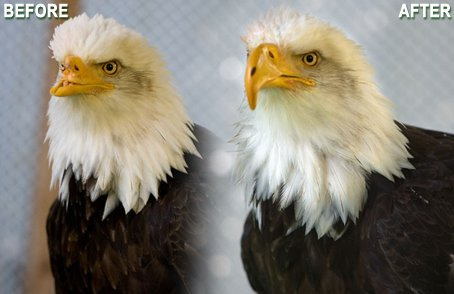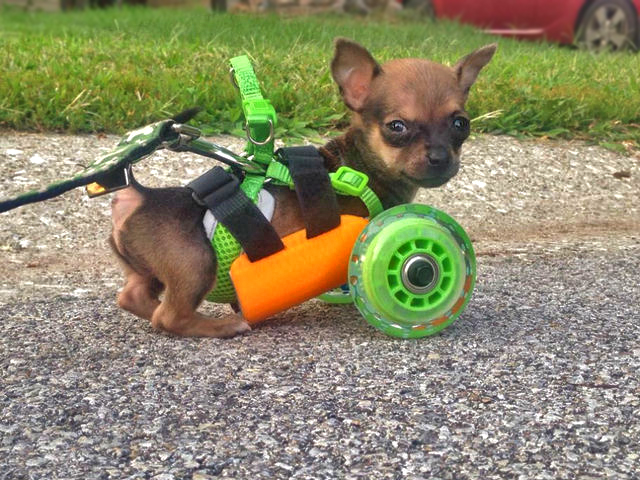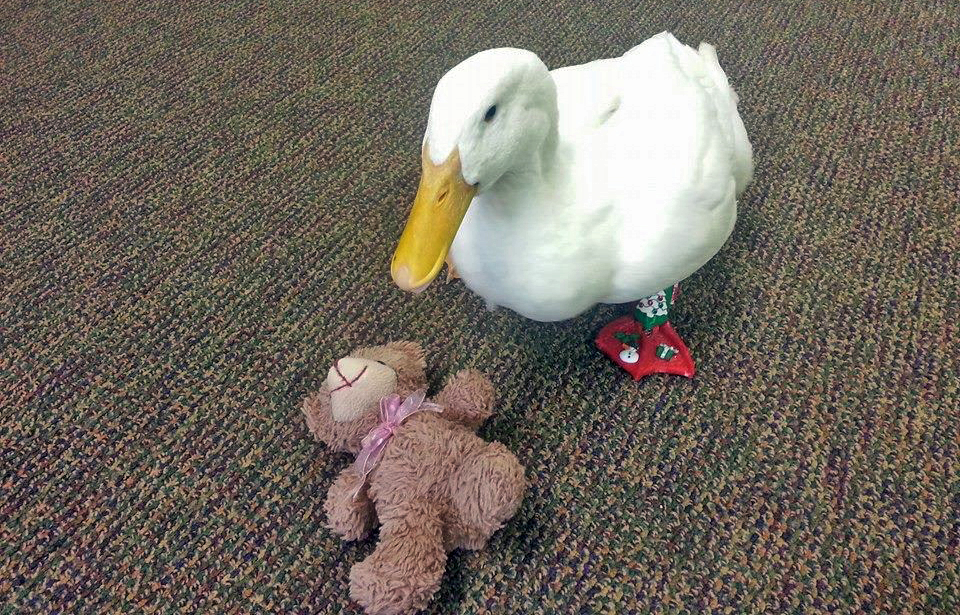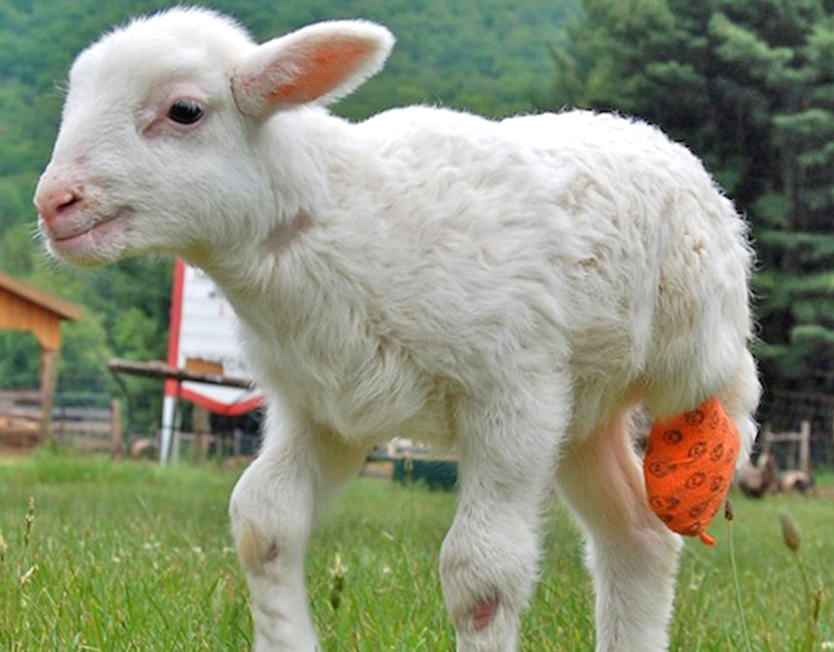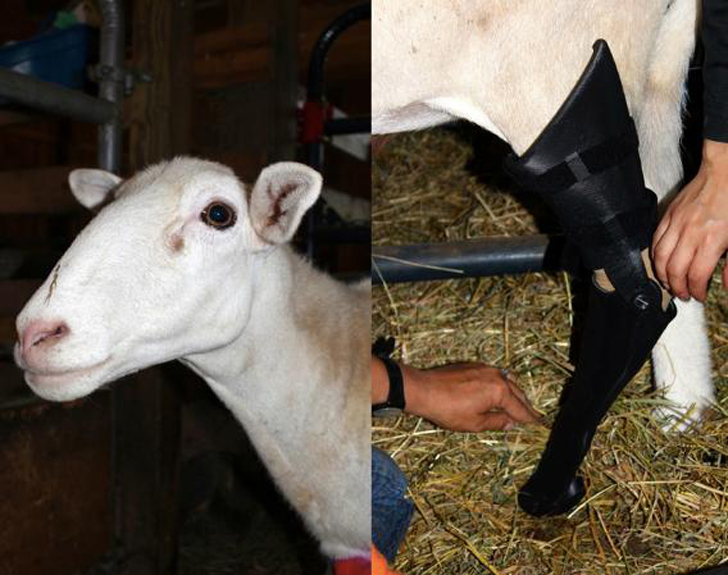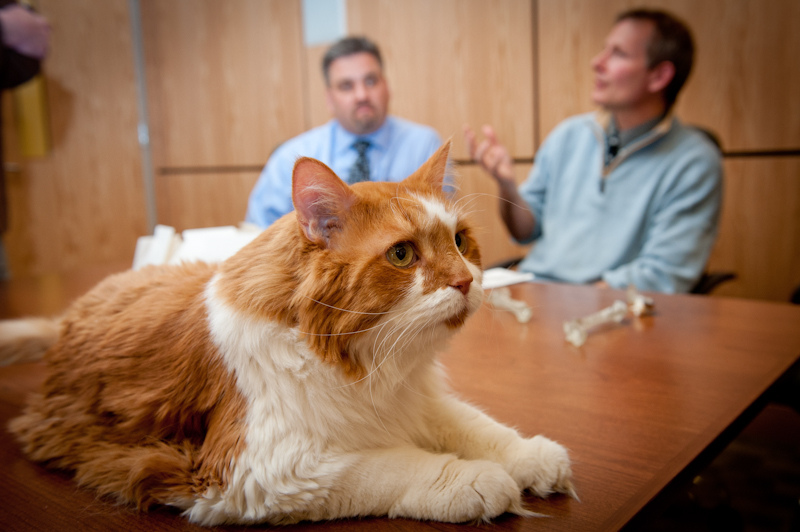Among 3D printing’s many applications, the one that always guarantees a warm and fuzzy feeling is when its used to improve the lives of warm and fuzzy animals. Particularly when its applied to 3D print prostheses that give deformed, damaged, or diseased animals (many on the verge of being euthanized), a second chance.
For the tens of thousands of years that animals and humans have been around, even if you start counting from when humans first domesticated animals (dogs) about 15,000 years ago, the notion of veterinary care only formalized in 1761 A.D. with the opening of a school for veterinary science in France. Our expertise in caring for animals began first with horses, cattle, and livestock and has since extended to companion animals, especially dogs and cats, as well as wild or exotic animals. With the advances in veterinary medicine, especially in custom prosthetics and implants, we can do more today for the well-being of non-human species than we ever could before. And, with 3D printing, we are doing more than we could have ever imagined possible.
Here are ten animals we’ve been lucky to help save:
1. Beauty the Bald Eagle
This adult female bald eagle was shot in the face by poachers in Alaska in 2005, and although she escaped with her life, the poachers’ shot obliterated the upper mandible of Beauty’s beak. Without it, she was unable to fend for herself, eat food on her own, or preen her feathers. A situation probably akin to trying to survive without one jawbone. She was rescued by Janie (Fink) Veltkamp and attended to at the Birds of Prey NW facility. Her beak didn’t look like it would grow back and expert opinions suggested euthanizing her as the only option.
Beauty and the Beak from Keith Bubach – Trooper Media on Vimeo.
At this point, Nate Calvin, a mechanical engineer who knew about 3D printing technology, offered to help save Beauty. He made a mold of her missing upper mandible, 3D scanned it, used software to tweak the 3D model, and then printed it in nylon-polymer material. The 3D printed prosthetic was fitted onto the remaining beak using a titanium metal mount. Beauty was able to eat and drink on her own again, thanks to the synthetic beak. And, since 3D printing allows for quick and flexible redesign, her prosthetic beak was easily modified to suit her better as she adjusted to it over the years. Recently, her natural beak has begun to show some growth, and she can now consume strips of salmon herself. As such, ever since this was first made public in 2008, there has been an outpouring of support for Beauty and her story, and, soon, it will have its very own book!
2. TurboRoo the Chihuahua
Unfortunate to have a birth defect common among small dogs, this chihuahua was born without its two front legs. Despite the recommendations of four vets that the dog be euthanized, his owner refused to give in and left him at a vet office hoping the chihuahua would find someone to care for him. He did. Ashley Looper, a vet tech in Indianapolis, fell in love with him. She and her boyfriend Ray adopted him and named him ‘TurboRoo’, after the snail in the movie Turbo. They tried to build a cart for TurboRoo with PVC pipe and parts from a Fischer-Price toy, but it didn’t quite work.
Mark Deadrick, president of 3dyn in San Diego, heard about TurboRoo’s story, thanks to a local news report that went viral, and decided to use 3D printing to make the pup a better mobility cart. It fit TurboRoo perfectly and, as he grew, 10 different carts were made until he reached his full adult size. He can now move around comfortably on his own, stopping, starting, moving backwards as and when he chooses to. Eventually, his story led to the founding of TurboRoo Designs, a small company that custom designs 3D printed mobility carts for dogs. Earlier this year, TurboRoo won ‘Underdog of the Year’ at the CW Network show in L.A and is a celebrity dog with over 66,000 followers on Instagram!
3. Akut-3 the Sea Turtle (a.k.a RoboTurtle)
In July, 2014, a collision with a boat’s propeller, left this loggerhead sea turtle named Akut-3 (for the Turkish rescue agency that found him floating in the water – AKUT Arama Kurtarma Derneği) without 60 percent of his right upper and lower jaws. He was then brought to the Dalyan Iztuzu Pamukkale University (PAU) Sea Turtle Research, Rescue & Rehabilitation Center where he was fed by hand and nursed back to health. But, with the injured jaw, Akut-3 would not survive on his own and a permanent solution had to be found. His rescuers then approached BTech, a pioneering medical 3D printing company in Turkey, specializing in patient-specific implants for humans.
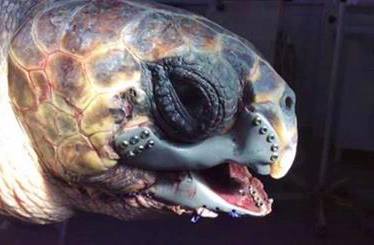
Akut-3 isn’t the only turtle or tortoise who has 3D printing to thank for a second-chance at life. There’s also Augie, Stumpy, and Cleopatra.
4. Buttercup the Duck
This duck tale is about a lively little duck named Buttercup who was born with a left foot that was turned backwards. The deformed foot left Buttercup unable to walk or waddle like a normal duck and caused him tremendous pain. His caretakers tried physiotherapy, but it wasn’t making a difference. Mike Garey, founder of the Feathered Angels Waterfowl Sanctuary in Tennessee, who was caring for Buttercup, initially thought that amputating the deformed foot and replacing it with a peg leg would be best for the duck’s survival. But then he tried seeking help from Novacopy, a company specializing in 3D printing, who came up with a unique solution for Buttercup.
They scanned the left foot of Buttercup’s sister, Minnie, and used it to 3D model and print a mold for a new, silicone foot. The silicone foot was then fitted on using a customized nylon sock and Buttercup was able to walk more like a duck again. Several versions were made to make the prosthetic foot a better, more flexible fit for him. Later, a special foot with flapper doors was also designed to allow Buttercup to swim and, because 3D printing allows for quick and easy customization, they even made him a unique foot for Christmas! You can find out more about how this famous duck’s been doing on his Facebook page.
For other feathered animals that 3D printing has helped, check out Ozzie, Dudley, Quack Quack and Trooper.
5. Holly the Horse
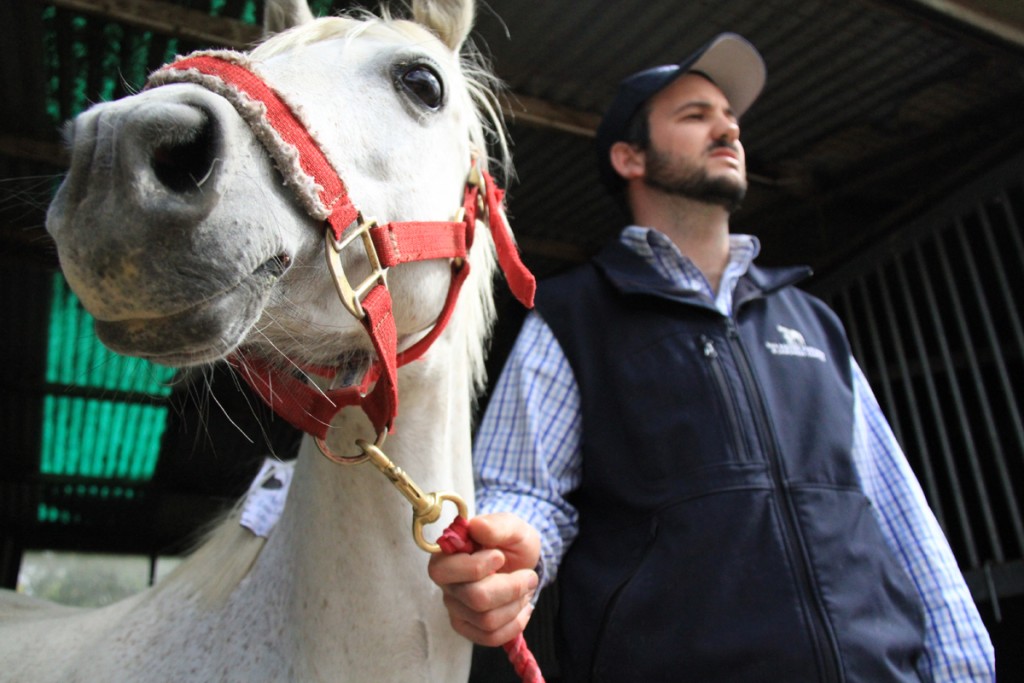
Probably the largest animal to use a 3D printed prosthetic, Holly, a ten-year-old mare in Australia, suffered from laminitis, a crippling disease that is common among horses, ponies, and donkeys. Laminitis affects the hooves of these animals and Holly had been suffering from it for three years. The disease causes pain and inflammation between the hoof and bone (an attachment similar to that of our finger and nail) and if unattended, could have left Holly unable to walk. Her vet and farrier, Luke Wells-Smith from the Equine Podiatry and Lameness Centre, had heard of the work CSIRO (Australia’s national science agency) had done with a racehorse, aptly named “Titanium Prints”, using 3D printed titanium horse-shoes.
CSIRO hadn’t previously used 3D printing to rehabilitate lame horses, but, with Holly, they had their first opportunity. Collaborating with horse podiatrists, they 3D scanned and designed a shoe that was a perfect fit for Holly’s hoof and 3D printed it in titanium. The custom shoe, a first of its kind ‘horse-thotic’ that can be made on-demand in less than a day, would equally redistribute the weight and stress on the hoof, encourage it to heal and give Holly a chance to recover.
6. Grecia the Toucan
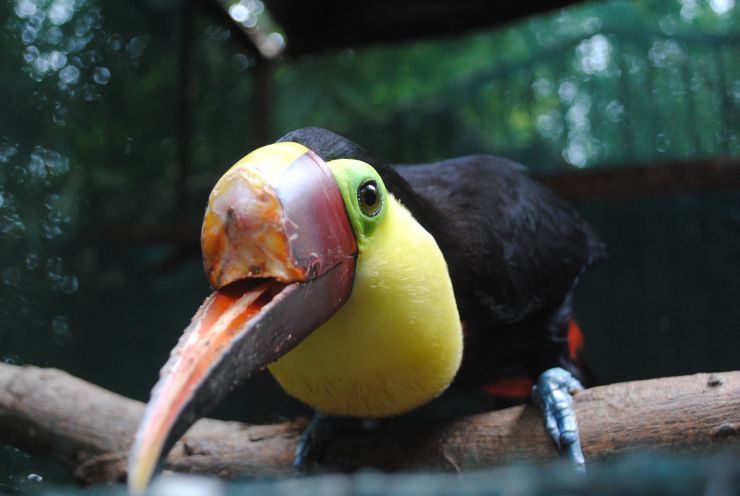
A thoughtless act of cruelty by a group of teenagers left this one-year old toucan without a significant portion of its upper beak. Named ‘Grecia’ after the town in Costa Rica where he is from, the male toucan has since been recovering at Costa Rica’s Animal Rescue Bird Zoo. A toucan’s beak is not just vital to its ability to feed and defend itself, but is also needed to find a mate, since females choose one based on the color of a male’s beak. Although he quickly learned to use his lower beak to feed himself, he is still dependent on his caretakers for survival. There was an outpouring of rage and sympathy when news of what had been done to Grecia spread and, thankfully, it didn’t just end at that. A handful of local companies came forward to help build a prosthetic beak for Grecia and an Indiegogo campaign for him met its $10,000 goal in less than 48 hours.
The toucan’s beak itself is a marvel of lightweight strength still being studied by material scientists and replicating it using 3D printing isn’t a straightforward task. Attaching it to the remaining beak’s stump using pins wouldn’t be simple either, since the sandwich structure of the beak includes blood vessels, nerves, and tissue. But efforts are underway to design an ideal beak in two parts with one that can be detached, cleaned and readjusted as Grecia grows with it. It is also likely that it will be attached using a denture-type glue that won’t be chemically harmful. If successful, the 3D printed replacement beak procedure will be the first of its kind in Latin America and the first for a toucan. And, since it will be 3D printed, Grecia might enjoy the opportunity to have a uniquely colored beak!
7. Felix the Sheep
Felix isn’t any ordinary sheep. Firstly, he is a rare kind of sheep called a Katahdin, that grows hair instead of wool. Secondly, and more importantly, as a baby, Felix arrived at Woodstock Farm Animal Sanctuary (WAFS) in New York missing a hind leg. The three-legged sheep, in need of a prosthetic, was cared for by Jenny Brown, founder of WAFS, who herself wears a prosthetic, having lost a leg to a childhood struggle with cancer. Felix was then fitted with a regular prosthetic leg and, just as he was getting used to it, it had begun to wear out.
It just so happened that Sean Eldrige, of the Hudson Valley Advanced Manufacturing Center (HVAMC) in New York, met Felix while taking a tour at WAFS and suggested designing a 3D printed prosthetic for the Katahdin. With the help of a prosthetist, a veterinarian, and a biology major from SUNY New Platz, a cast was scanned and modified to build a custom prosthetic leg for Felix. The leg was printed in Stratasys’ ABSplus, similar to the material LEGOs are made of, but of an engineering grade. It was then tested and adjusted to ensure fitment. He may not give wool, but who cares, a 3D printed leg is so much more to ‘baa-baa’ about. The three-legged Felix is once again four-legged and, now, has a long, healthy life to look forward to.
8. Paris Shellton & Co. the Hermit Crabs
Housing crisis for hermit crabs! There’s a shortage of shells in the ocean for these crabs, who don’t produce their own shells, but tend to adopt shells they find as their homes. If they don’t find a shell, they’re likely to use garbage, cans, pipes, bottles or anything else as makeshift houses. For domesticated hermit crabs, owners typically farm shells for their pets. So a shortage of shells is just bad news all round.
TeamTeamUSA and MakerBot came together to start Project Shellter, with which they are exploring the possibility of 3D printing shells. While their prototypes are made of plastic, they hope to develop eco-friendly, sustainable shells for hermit crabs. Some shells are modeled on that of the sea snail, Oxystele sinensis, and empirical tests are performed to see if and how a hermit crab takes to them. The crabs are especially picky about the kind of shell they would make their home (I’m sure we can sympathize with that!), so designing and 3D printing these shells isn’t so simple. Project Shellter has a group of classy crabs to test their 3D printed crabitats on, and these crabs have great names: Paris Shellton, Tori Shelling, Khloe and Kourtney Karshellian, and Shellton John. Although this application doesn’t involve prosthetics, its a unique example of humans using 3D printing to recreate a natural habitat without any man-made limitations.
9. Cyrano the Cat
Nine-year-old Cyrano L. Catte II, more popularly known as Cyrano, had a great life taken away from him when he developed bone cancer in one of his left legs. His caretakers were intent on doing everything it took to heal Cyrano and bring his life back to normal. He was the first cat ever to receive radiation therapy and although it sent his cancer into full remission, it left his leg damaged beyond repair. Amputating the leg would have been the recommended next step, but for the 26 pound cat, surviving on three legs would invite a host a other problems. The only possible alternative would be a total knee athroplasty (TKA), though it had never been done before for a cat. Yet the pioneering Cyrano would be the first cat to undergo that treatment too.
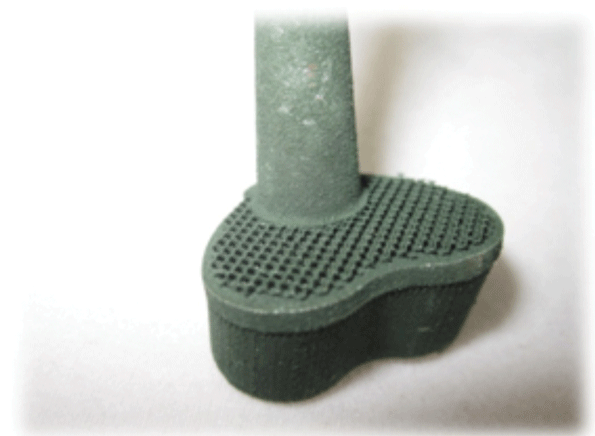
10. Derby the Dog
Arguably the most well-known application of a 3D printed prosthesis for an animal. Derby was born with deformities in both of his front legs, which left him unable to walk, run, or even sit upright. Slated to be euthanized, he was rescued and fostered by Tara Anderson, an employee at 3D Systems, who saw him at the Peace and Paws Dog Rescue in New Hampshire, USA.
With the 3D technologies available to Tara, she set about trying to create a custom prosthesis for Derby, starting with casts to mold the prosthetic design and later elbow cups modeled on 3D scans taken of Derby’s deformed legs. The idea was to get Derby running again, but without wheels. During this time, he was adopted by the Portanova family who worked with Tara to develop the first of their kind prosthetic legs. These legs were developed in stages by trial and error, with the design slowly adjusted to Derby’s body, particularly his spine, as he grew. The material had to be strong, durable, and flexible to closely mimic the behavior of his natural legs. The final 3D printed prosthetic had a curved design and incorporated treads to provide traction. It even had his name printed on each prosthetic leg! Today, Derby, nearly two years old, doesn’t just walk, but runs, miles and miles each day.
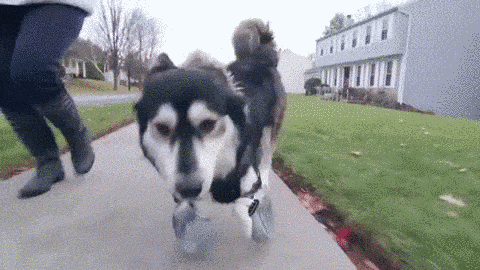
In each one of these examples, 3D printing has brought hope where they may not have been any before. It’s magic is three-pronged. First, it allows for prostheses or implants to be made at low cost and on-demand, and this is important because a prosthetic needs to be quickly modified and revised several times as the animal grows. Second, the range of materials available in 3D printing means that these prostheses can not only mimic the natural function of the missing part, but also integrate with the organic structure of the animal. Third, it allows for the creation of highly complex and custom prostheses and implants that are as unique as the animals they are designed for.
For every animal that would have otherwise been euthanized, for whom doors were closed by fate or human cruelty, 3D printing has brought far more than ten reasons to go on living. So, the next time you come across a deformed, damaged, or diseased animal, no matter how small or big, anywhere in the world, remember that there may always be something that can be done to save it.



